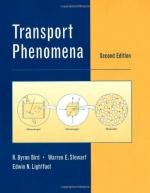|
This section contains 399 words (approx. 2 pages at 300 words per page) |
Active transport is movement of molecules across a cell membrane or membrane of a cell organelle, from a region of low concentration to a region of high concentration. Since these molecules are being moved against a concentration gradient, cellular energy is required for active transport. Active transport allows a cell to maintain conditions different from the surrounding environment.
There are two main types of active transport; movement directly across the cell membrane with assistance from transport proteins, and endocytosis, the "engulfing" of materials into a cell using the processes of pinocytosis, phagocytosis, or receptor-mediated endocytosis.
Transport proteins found within the phospholipid bilayer of the cell membrane can move substances directly across the cell membrane, molecule by molecule. The sodium-potassium pump, which is found in many cells and helps nerve cells to pass their signals in the form of electrical impulses, is a well-studied example of active transport using transport proteins. The transport proteins that are an essential part of the sodium-potassium pump maintain a higher concentration of potassium ions inside the cells compared to outside, and a higher concentration of sodium ions outside of cells compared to inside. In order to carry the ions across the cell membrane and against the concentration gradient, the transport proteins have very specific shapes, which only fit sodium and potassium ions. Because the transport of these ions is against the concentration gradient, it requires a significant amount of energy. It has been estimated that a full one third of the ATP used by a resting animal is used by the sodium-potassium pump.
Endocytosis is an infolding and then pinching in of the cell membrane so that materials are engulfed into a vacuole or vesicle within the cell. Pinocytosis is the process in which cells engulf liquids. The liquids may or may not contain dissolved materials. Phagocytosis is the process in which the materials that are taken into the cell are solid particles. With receptor-mediated endocytosis the substances which are to be transported into the cell first bind to specific sites or receptor proteins on the outside of the cell. The substances can then be engulfed into the cell. As the materials are being carried into the cell, the cell membrane pinches in forming a vacuole or other vesicle. The materials can then be used inside the cell. Since all types of endocytosis use energy, they are considered active transport.
|
This section contains 399 words (approx. 2 pages at 300 words per page) |


